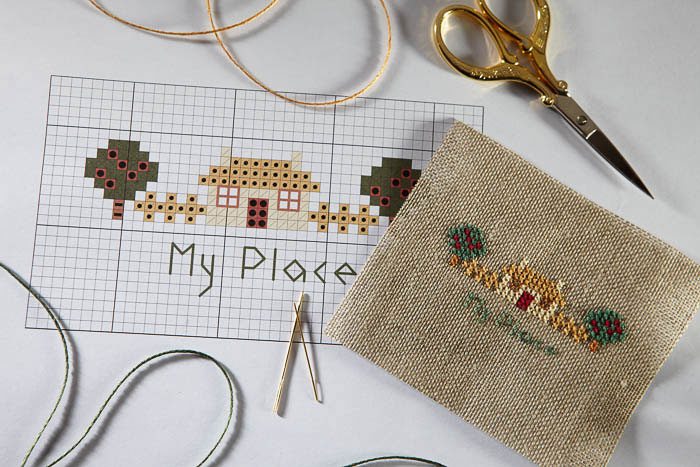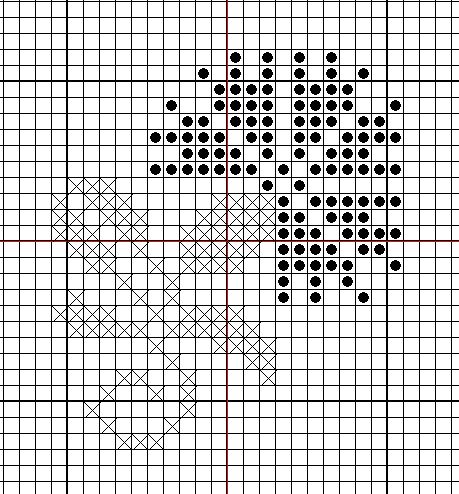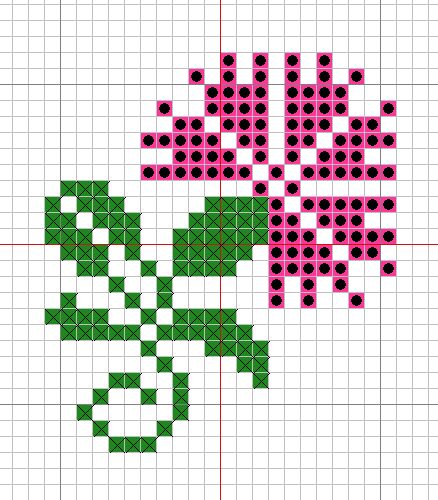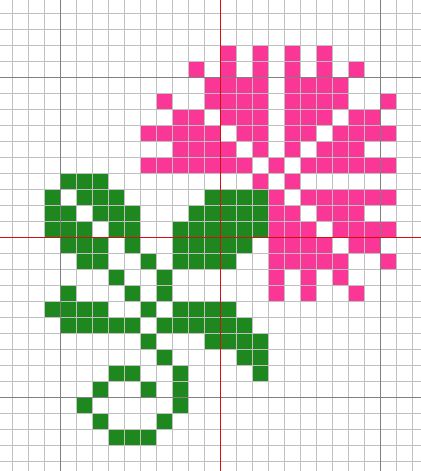Cross Stitch Chart and Key Basics

Charts and Keys
Each square on a chart, both occupied and unoccupied, represents two threads of linen or one block of Aida unless otherwise stated. Each occupied square equals one stitch unless otherwise stated.

Cross stitch charts generally consist of whole squares representing complete cross stitches, but sometimes you will see additional stitches added indicating three-quarter cross stitches (sometimes called fractional stitches), French knots and so on.

Traditionally, cross stitchers begin to stitch from the middle of the chart and the middle of the fabric to ensure that the design is centred when it is mounted and framed. Find the middle by following the arrows, or counting the stitches left to right and top to bottom.
The count of a fabric (the number of stitches to 2.5cm or 1in) affects the size of a finished piece even when worked from the same chart.

To prevent serious counting errors, use a coloured pen to rule a line on the chart from arrow to arrow to find the centre and then add a line of tacking (basting) to the fabric. If working a band sampler, work the tacking (basting) lines down either side of the first band – to prevent your project wandering to right or left.
When looking at a chart, try to plan the direction in which you are going to stitch. If you count across the shortest distances of empty fabric each time you will avoid making counting mistakes. This sometimes means counting diagonally, vertically or horizontally across a pattern. Mistakes most often occur when counting across long sections of blank fabric.
You can turn your work and the chart upside down if you prefer to work towards you, but never turn halfway – your stitches will end up facing the wrong way!
Types of Charts
When stitching cross stitch designs from books, magazines and kits you may find different types of charts but don’t panic – they all give you the same information in a slightly different way. Many stitchers prefer the black and white variety as it is easier to differentiate between some of the shades.